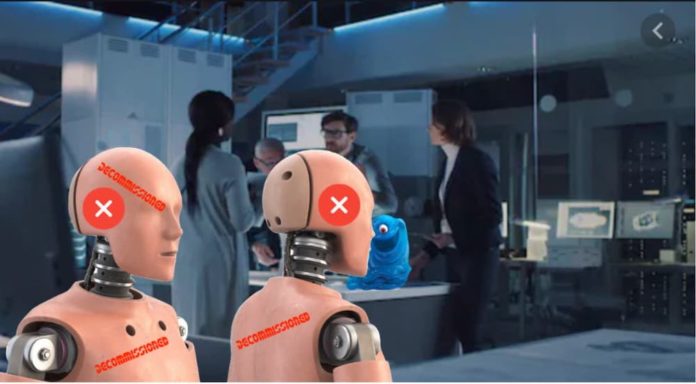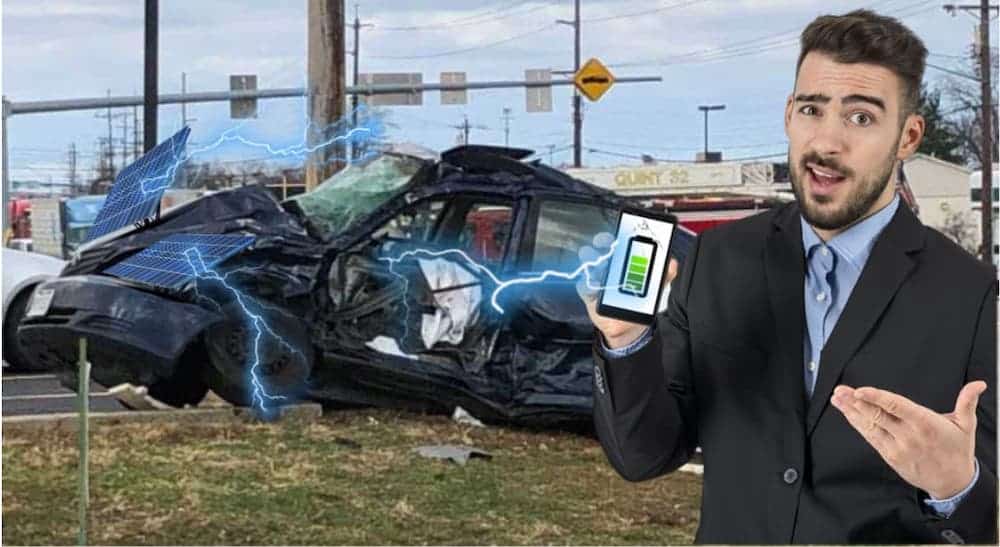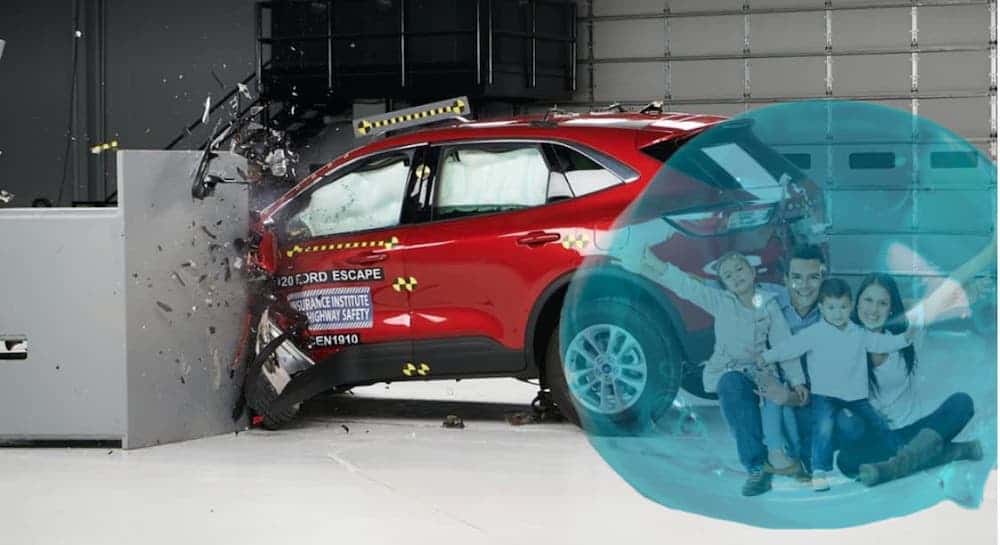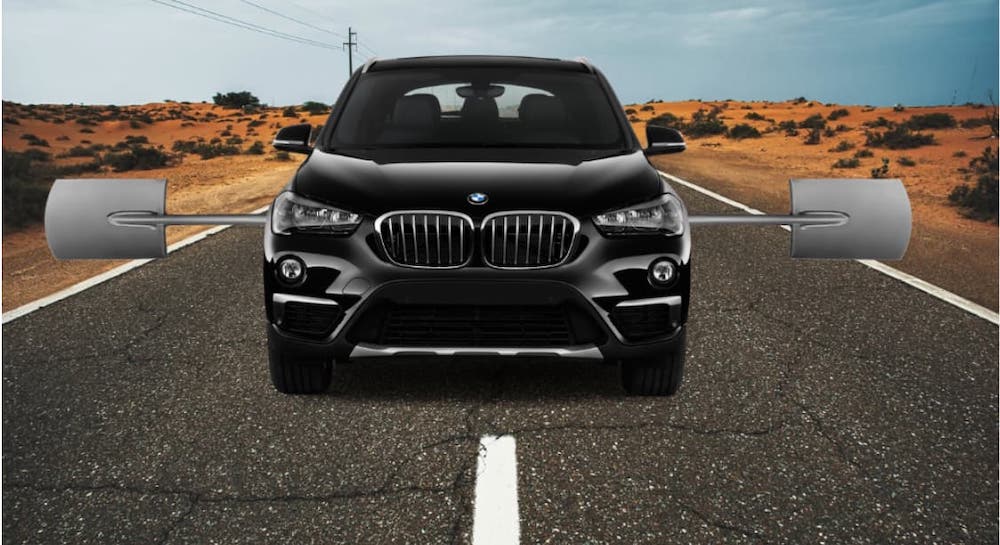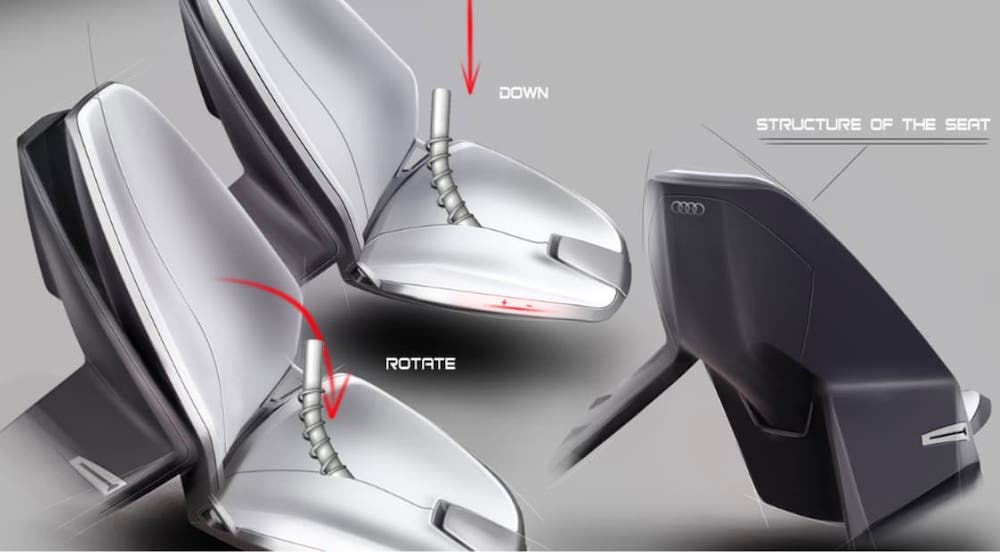Safety. Technology. Proactive. These are the kinds of buzzwords that sell vehicles, words that evoke a strong feeling that car companies are looking out for us and making sure we stay protected on the road. Never mind that they’re constantly pushing the envelope on how fast their vehicles can go, or that reduced speed is the single most effective way of reducing collisions, or that so many manufacturers lock their best safety features behind paywalls of higher trim levels. No, ignore all of that – car companies definitely care about you and your wellbeing.
They care about you so much, in fact, that they’re constantly developing new and exciting methods of keeping you more-or-less safe on the road. Personally, I love this stuff. The more advanced safety features other drivers have, the less careful I have to be on the road because their cars will help protect me from myself. It’s the perfect setup.
The one thing that everyone that knows me says about me is this: [wordless screaming intensifies]. The other thing they’ll tell you is that I’m here to help you and make your life better. So I’m going to give you a sneak peek into some of the impressive new safety technology being developed right now, which you’ll find hitting the road in the next couple years.
Impact Converters
This is an interesting bit of technology that comes from two departments working at one of the bigger auto manufacturers. Apparently, it came about as a bit of a “peanut butter in my chocolate,” “chocolate in my peanut butter” situation as engineers in the safety department were having lunch with a few colleagues that were working on new powertrain ideas. According to one of my sources, the safety people were complaining about a lack of ideas for how to deal with collisions and dangers to drivers, primarily that there are only so many ways to help drivers avoid a collision.
At that point in the meal, one of the other engineers stopped eating, dropped his fork, and looked as though he’d been struck by lightning. His response was simple, “So don’t.” When asked, he doubled down on the idea: don’t avoid collisions, use them. From that very basic idea came an afternoon of furious debate, unreliable math, and an early sketch for a system that would become what’s being called, internally at least, “impact conversion.”
Impact converters are placed all around the outside of the vehicle – right now, they look like small panels of solar arrays, but they’re working on making them smaller. These converters are able to absorb energy from a collision and then turn it into a different type of energy. The process is complex, and I don’t understand all the physics behind it – but the result is that the vehicle suffers no damage, the occupants are unharmed, and the engine doesn’t have to work as hard to power the vehicle. Apparently, early tests have been quite promising, with only 71% of tests ending in catastrophic injury or decapitation – promising indeed!
Gelatinous Hyperpods
Meanwhile, at one of my favorite Japanese auto manufacturers, they’re dealing with the problem of collisions and safety a bit differently. They accept the fact that some collisions are unavoidable; no matter how good safety technology becomes, people will drive too fast and run into stuff. It’s human nature.
Rather than worrying about mitigating damage to the vehicle, the designers at this company have focused on protecting the people within. Enter the gelatinous hyperpod. Traditional seats within their test vehicles have been replaced by self-stabilizing gelatinous forms in what could only be described as a grossly oblate spheroid shape, rather similar to an egg. You don’t sit on these hyperpods – instead, you allow your body to be enveloped by them, and you’re comfortably surrounded by the silky goo within.
In the event of a collision, the exterior of the hyperpods will solidify to protect passengers. Even if the vehicle is completely destroyed, anyone inside a hyperpod remains unharmed. Best of all, the gelatinous filling is actually edible, so if you’re stuck for a long time and feeling a bit peckish, you can start eating your way to safety. As of right now, it’s impossible to breathe inside the hyperpods, which has been described as “mildly problematic,” but they feel confident they’ll figure that out before launch.
Collision Avoidance Flippers
This is safety technology I’ve been arguing in favor of for years now: why make your car avoid a collision when you can make the other guy avoid it instead? Collision avoidance flippers can be installed onto any vehicle, of any size and design, and surround the car with a circle of flippers that look a lot like large spatulas or snow shovels. When an imminent collision is detected, then the magic happens.
As the other vehicle approaches and nears, the flippers slide under the car, and then a pneumatic system sends the flippers slamming upward. The result is that the approaching vehicle is hurled into the air, well clear of your vehicle, and then comes crashing down beyond you. Best of all: it doesn’t matter if the potential collision is your fault or theirs; either way, you’re safe. No auto manufacturers currently seem interested in the collision avoidance flippers, which means they’re likely to be an aftermarket accessory.
The Nozzle
The less you ask about the Nozzle, the better. Know this: it will deploy when ready, you should remain motionless while it functions, and it’s for your own safety. Just try not to make eye contact with it and maintain neutral thoughts during use.
Universal Collision Alteration
Here’s one of my favorite options; it’s actually based on an idea I had and began developing some time ago, before the breakdown. It’s based on a simple concept: in an infinite universe with infinite parallel universes, there’s always one where something does or doesn’t happen. Perhaps you slam into another vehicle, head-on, traveling at 75mph – but there’s another universe parallel to our own, where you don’t.
The universal collision alteration system simply pulls you from our universe, where you’re about to die or at least be mutilated in a horrifying crash, and safely plops you into another universe where you’re not. Conservation of energy and matter, however, means that for this to work, the “you” in that other universe needs to be brought into this one – so you’re not simply moved, but actually swapped. Bad news for that guy!
As long as you’re alright with some of the effects of switching to a different universe, this is one of the most foolproof safety systems imaginable. It’s much easier to put you into a reality where a collision was never going to happen then to ensure you never get into a crash. Early testing has been relatively positive, though hallucinations, night terrors, and moderate-to-severe paranoid schizophrenia have all been associated with the use of this technology.
Still, better to catch a glimpse of the space between universes and the hungry thoughts that wait for us there than to get into a fender bender and deal with your insurance company, right? Or for you to have to drive a little bit slower and more carefully. Talk about a real nightmare!
Editor’s Note: We reached out to several automotive manufacturers to find if any of them were currently working on this technology. While we couldn’t verify the development of most of them, we were sent a package with a sample of hyperpod goo, and we can tell you this: it’s delicious. Thank you.


